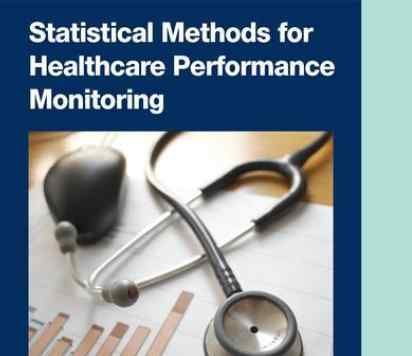Results
- Showing results for:
- Reset all filters
Search results
-
Journal articleBottle A, Aylin P, 2009,
Application of AHRQ patient safety indicators to English hospital data
, QUALITY & SAFETY IN HEALTH CARE, Vol: 18, Pages: 303-308, ISSN: 1475-3898- Author Web Link
- Cite
- Citations: 28
-
Journal articleAylin P, Bottle A, Jarman B, 2009,
<i>Standardised mortality ratios</i> Monitoring mortality
, BRITISH MEDICAL JOURNAL, Vol: 338, ISSN: 0959-8146- Author Web Link
- Cite
- Citations: 8
-
Journal articleJeyarajah S, Faiz O, Bottle A, et al., 2009,
Diverticular disease hospital admissions are increasing, with poor outcomes in the elderly and emergency admissions
, Alimentary pharmacology & therapeutics, Vol: 30, Pages: 1171-1182, ISSN: 1365-2036BACKGROUND: Diverticular disease has a changing disease pattern with limited epidemiological data. AIM: To describe diverticular disease admission rates and associated outcomes through national population study. METHODS: Data were obtained from the English 'Hospital Episode Statistics' database between 1996 and 2006. Primary outcomes examined were 30-day overall and 1-year mortality, 28-day readmission rates and extended length of stay (LOS) beyond the 75th percentile (median inpatient LOS = 6 days). Multiple logistic regression analysis was used to determine independent predictors of these outcomes. RESULTS: Between the study dates 560 281 admissions with a primary diagnosis of diverticular disease were recorded in England. The national admission rate increased from 0.56 to 1.20 per 1000 population/year. 232 047 (41.4%) were inpatient admissions and, of these, 55 519 (23.9%) were elective and 176 528 (76.1%) emergency. Surgery was undertaken in 37 767 (16.3%). The 30-day mortality was 5.1% (n = 6735) and 1-year mortality was 14.5% (n = 11 567). The 28-day readmission rate was 9.6% (n = 21 160). Increasing age, comorbidity and emergency admission were independent predictors of all primary outcomes. CONCLUSIONS: Diverticular disease admissions increased over the course of the study. Patients of increasing age, admitted as emergency and significant comorbidity should be identified, allowing management modification to optimize outcomes.
-
Journal articleJen MH, Holmes AH, Bottle A, et al., 2008,
Descriptive study of selected healthcare-associated infections using national Hospital Episode Statistics data 1996-2006 and comparison with mandatory reporting systems
, JOURNAL OF HOSPITAL INFECTION, Vol: 70, Pages: 321-327, ISSN: 0195-6701- Author Web Link
- Cite
- Citations: 14
-
Journal articleVincent C, Aylin P, Franklin BD, et al., 2008,
Is health care getting safer?
, BRITISH MEDICAL JOURNAL, Vol: 337, ISSN: 0959-8146- Author Web Link
- Open Access Link
- Cite
- Citations: 116
-
Journal articleAylin P, Bottle A, Kirkwood G, et al., 2008,
Trends in hospital admissions for pulmonary embolism in England: 1996/7 to 2005/6
, CLINICAL MEDICINE, Vol: 8, Pages: 388-392, ISSN: 1470-2118- Author Web Link
- Cite
- Citations: 25
-
Journal articleBottle A, Aylin P, 2008,
How NHS trusts could use patient safety indicators to improve care
, Health Care Risk Report, Pages: 12-14 -
Journal articleBottle A, Aylin P, 2008,
Intelligent information: A national system for monitoring clinical performance
, HEALTH SERVICES RESEARCH, Vol: 43, Pages: 10-31, ISSN: 0017-9124- Author Web Link
- Cite
- Citations: 61
-
Journal articleBottle A, Gnani S, Saxena S, et al., 2008,
Association between quality of primary care and hospitalization for coronary heart disease in England: National cross-sectional study
, JOURNAL OF GENERAL INTERNAL MEDICINE, Vol: 23, Pages: 135-141, ISSN: 0884-8734- Author Web Link
- Cite
- Citations: 43
-
Journal articleGarout M, Tilney HS, Tekkis PP, et al., 2008,
Comparison of administrative data with the Association of Coloproctology of Great Britain and Ireland (ACPGBI) colorectal cancer database
, INTERNATIONAL JOURNAL OF COLORECTAL DISEASE, Vol: 23, Pages: 155-163, ISSN: 0179-1958- Author Web Link
- Cite
- Citations: 46
This data is extracted from the Web of Science and reproduced under a licence from Thomson Reuters. You may not copy or re-distribute this data in whole or in part without the written consent of the Science business of Thomson Reuters.
Privacy notice
The Dr Foster Unit at Imperial College London uses your health information for a number of purposes. The Dr Foster Unit GDPR Privacy Notice (PDF) provides a summary of how we use your information.
